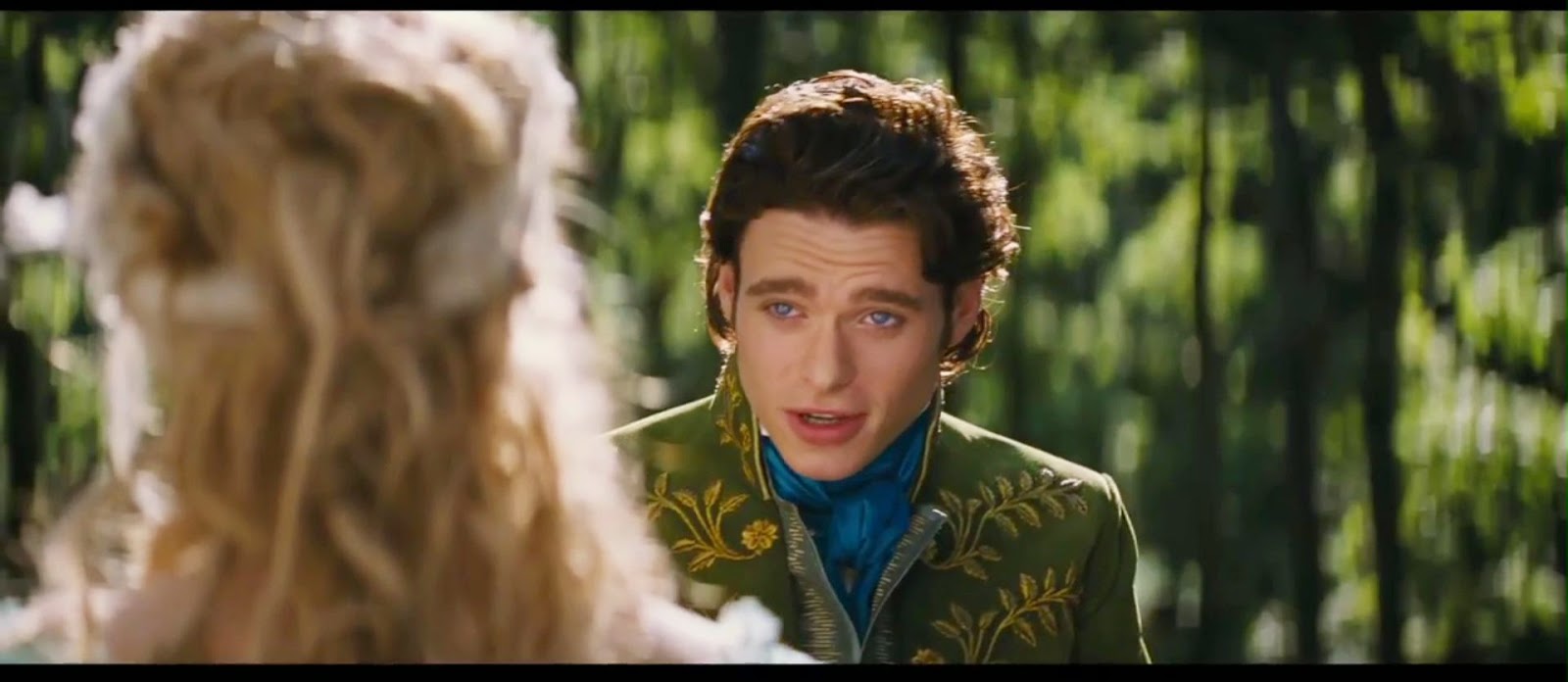After seeing Disney's live-action update of Cinderella (along with trailers for Pixar's Inside Out and Disney's Tomorrowland, both out this summer), I'm reminded not only of the magic of movies and the movie-going experience, but also by how they can be used to impact audiences, and make a difference in peoples' lives. Whether we need to be reminded of who we are, or need encouragement through life's trials, films can (like Cinderella's worldview in the former film, based on the classic Charles Perrault version) help us "look at life not as it is, but as it could be."
As a child, Ella (Cinderella) is influenced by her parent's joyous and courageous outlook, even after her mother's untimely death. While Ella does her best to press on courageously and joyously, her father believes she still needs a mother's care and asks his daughter for her permission to marry again and start a new chapter in life.
And we all know this eventually leads to a dark chapter in Ella's life, as her family is joined by stepmother Lady Tremaine (a truly wicked Cate Blanchett) and two stepsisters, Anastasia and Drisella. And when her father dies unexpectedly while traveling, Ella is coldly and cruelly forced into the role of a servant. As the film tells us, "it would [eventually] seem her stepmother and stepsisters had transformed her into a creature of ash and toil." Hence the name they give her, "Cinder-Ella".
 |
| The Wicked Stepmother (center) and Stepsisters |
What's different in this version of the classic fairy tale (directed by Kenneth Branagh) is how grounded it is. (Not completely. This is a fairy tale, after all, and I, personally, have some minor issues with a few of the fantastical and romantic elements, including Cinderella's dress and a few hourglass figures.) For the most part, however, this film version breathes new life into the legend and makes it feel both classical and contemporary.
Disney's reimagining of fairy tales and classic stories in recent years began with the satirical homage that was Enchanted (2007). It featured Amy Adams as a Snow White-type princess who is thrown into the real world and learns what real love is. Though that film was more of a parody as it was a tribute to Disney's animated classics, it was director Tim Burton's take on Lewis Carroll's Alice in Wonderland (2010) that set a standard for not only visually-appealing fantasy worlds in today's 3D age, but also surprising stories with strong and re-imagined leading characters, particularly females, who become better people capable of more than even they know. Mia Wasikowska wonderfully portrayed Alice as an older girl who revisits her childhood world of "Underland" and old friends, and learns of her role not only in this world but in her own.
 |
| Alice, brave and daring. |
 |
| Oz, conniving yet resourceful. |
 |
| Maleficent, wicked yet vulnerable. |
 |
| Cinderella, courageous and kind. |
The character dynamics and relationships in Cinderella are no exception in this list as well. Ella's relationship with her parents, we already know, is loving, while her relationships with her stepmother and stepsisters (for their part) are cruel and envious. Probably the most surprising relationships are those between Ella and the Prince--or, "Kit," as he goes by (played by Game of Thrones' Richard Madden)--, and the latter and his father, the King. Instead of first meeting at the ball, they meet in the woods, as Ella stops him and his guards from killing a stag. Her words and character have an effect on him, and this inspires him to have every maiden in the kingdom invited to the upcoming ball in order to see her again, not to mention going against the tradition of inviting just "princesses" to such occasions.
Both Ella and Kit are portrayed as characters who either come from strict or traditional upbringings, or are currently in such circumstances and feel trapped or broken by life as it is. They are also characters who don't have it all figured out, who are still learning in life (as we all are), and who question if the other will take them "just as I am". Yet, both choose to look at life with courage and kindness, and at life "not as it is, but as it could be". Now there's honesty and hope for a better tomorrow and ever after.
Both Ella and Kit are portrayed as characters who either come from strict or traditional upbringings, or are currently in such circumstances and feel trapped or broken by life as it is. They are also characters who don't have it all figured out, who are still learning in life (as we all are), and who question if the other will take them "just as I am". Yet, both choose to look at life with courage and kindness, and at life "not as it is, but as it could be". Now there's honesty and hope for a better tomorrow and ever after.






No comments:
Post a Comment